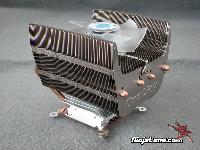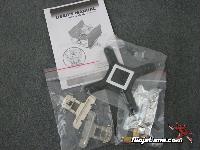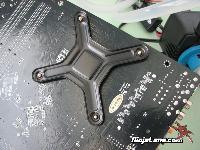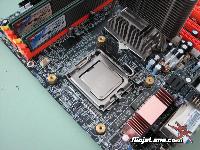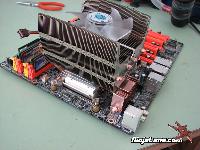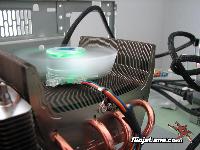After careful consideration I have decided to transfer all hardware review activities to a new domain. I purchased Hardwareasylum.com in 2012 and have been working hard to build a new and improved Ninjalane on that domain. If you are reading this you have reached one of the archived articles, news, projects and/or reviews that were left behind during the site migration.
Please update your bookmarks and be sure to visit the new and improved Ninjalane at Hardwareasylum.com
CoolJag Falcon 92-AL Review
Author: Dennis Garcia
Published: Sunday, June 24, 2007
Heatsink Features
We look at 2 basic things when reviewing a heatsink, installation, and performance. Installation is important for a variety of reasons and would include things like overall style, size, installation procedure, and feasibility after installation. Performance is pretty straight forward and is where we do a real-world heat test in normal and overclocked conditions.
Let’s start with installation. The Intel 775 is one of the few platforms in history that requires a board mounted heatsink solution. This allows for a more secure installation but can be somewhat confusing to some users as the steps are more involved.
The first step is to install the reinforced back plate; this is a molded steel plate that is held into place with 4 brass thumb screws. Athlon64 systems will only use 2 of the thumbscrews and will take advantage of the current backplate found on all Athlon64 systems (an AMD requirement)
The first step is to install the reinforced back plate; this is a molded steel plate that is held into place with 4 brass thumb screws. Athlon64 systems will only use 2 of the thumbscrews and will take advantage of the current backplate found on all Athlon64 systems (an AMD requirement)
The next step is to apply your favorite thermal paste, if you don’t have any Cooljag was nice enough to have supplied a small tube and applicator spoon.
The Falcon 92 AL is held into place with 4 screws (2 on the Athlon64) and without springs to hold any tension you simply tighten them in an alternating X pattern until they stop.
Attach the fan header and you'll be ready to go.
The Falcon 92 AL is held into place with 4 screws (2 on the Athlon64) and without springs to hold any tension you simply tighten them in an alternating X pattern until they stop.
Attach the fan header and you'll be ready to go.
The fan on the Falcon 92 AL is thermally controlled and will spin between 1200 and 2500 RPM. The sensor is designed to detect ambient or case temperature and responds to increase RPM as the temperature does. For noise control this is great and does tend to keep processor temperature within a narrow range however is slow to react when you're overclocking.
During our testing the fan RPM never rose above 1800 RPM and was near quiet throughout our testing.
During our testing the fan RPM never rose above 1800 RPM and was near quiet throughout our testing.

